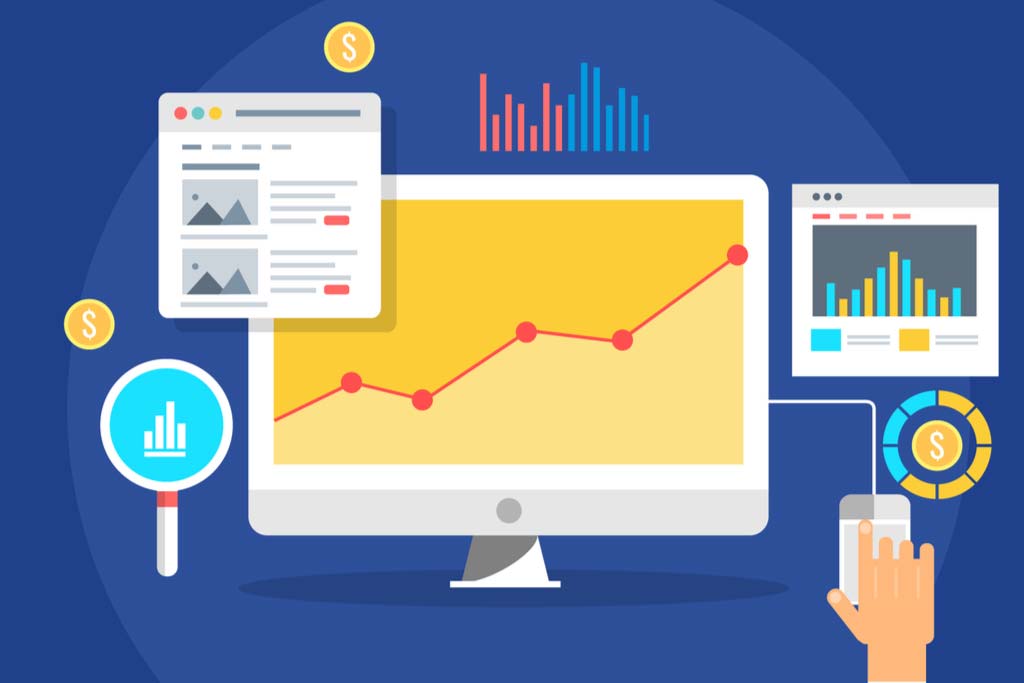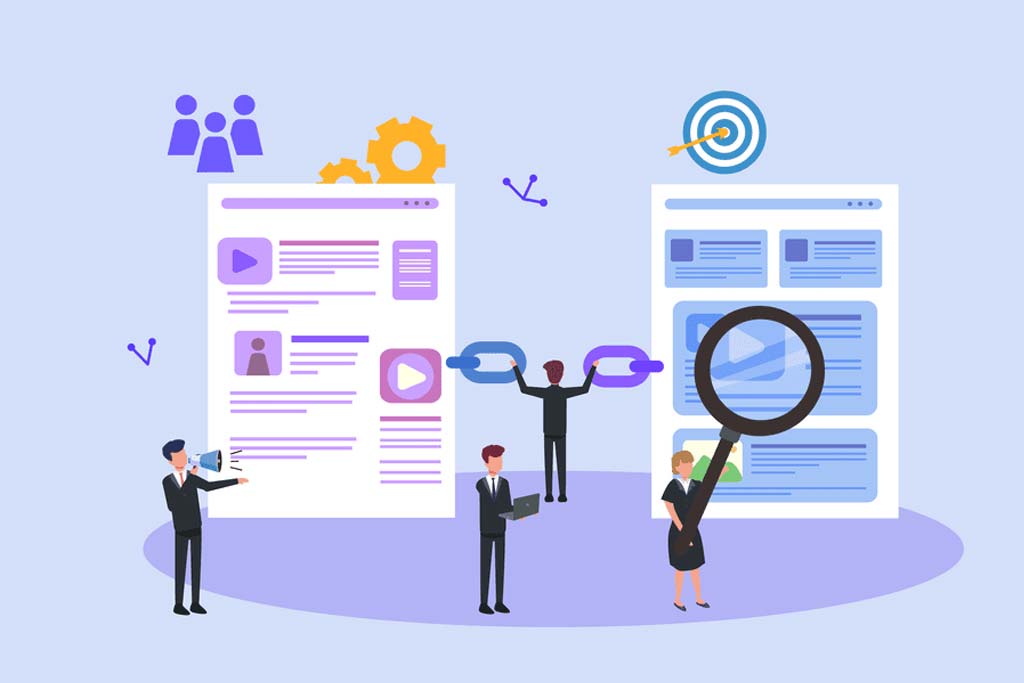Web sites can experience fluctuations in traffic due to various seasonal factors and other reasons. Site owners usually have an understanding of the normal range of traffic for their site. However, when a significant drop in traffic is observed, the first reaction is often to reverse recent changes. However, there can be many reasons for traffic loss, so it’s important to analyze the situation rather than make quick decisions.
Common reasons for website traffic drops include Google algorithm updates, technical issues, lack of website optimization, and increased competition. There are several ways to recover from traffic loss caused by these factors.
1-) Sandbox Check
If you notice a sudden drop in page rankings and traffic to your website, it could be because you have been penalized by Google. This type of penalty is often given for pages that use black hat SEO tactics, contain spam content, or engage in plagiarism.
If you have received a notification, you can check it in Google Search Console. Rather than ignoring these notifications, you should take immediate action to resolve the penalty. This includes fixing errors on your site and reconfiguring it to comply with Google’s web policies.
If you are working with an SEO agency, discuss their methods and ask them to identify the behaviors that led to the penalty and request corrections. If the SEO firm doesn’t act quickly to address the issues or provide appropriate solutions, consider finding a new agency.
Reconfiguring your site and removing the penalty may take time and effort. However, taking these steps is necessary to restore your web traffic and improve your Google rankings.
2-) Backlink Check
Losing important backlinks for your website can lead to decreased traffic and search engine rankings. Therefore, if you are experiencing backlink loss, you should first identify the reasons and then take steps to recover them.
Reasons for backlink loss can include websites that link to you shutting down, removing or changing their content, stronger backlinks being acquired by your competitors, or outdated content on your website.
If you experience backlink loss, you should first identify where the lost backlinks were and why they were lost. Then you can develop strategies to regain those backlinks.
To regain lost backlinks, you need to improve the quality and uniqueness of your content. This means that your content should provide more value to your site visitors. In addition, you can add new and engaging content to the pages where you have experienced backlink loss. This can encourage those who previously linked to your site to revisit and potentially regain those backlinks.
In some cases, you can reach out to the owners of sites with lost backlinks. By sending emails, you can ask why the backlink was removed and inquire about the possibility of restoring it. However, you must first identify who these owners are.
In addition, you can try to recover lost backlinks by using your social media platforms. Reposting or sharing can drive traffic to your site and potentially help you regain backlinks.
Recovering from backlink loss can sometimes be challenging. However, with the right strategies and by updating your content, you can regain lost backlinks and increase your website’s traffic.
3-) Traffic Analysis
Comparing different types of traffic sources to your website can be useful in analyzing your website’s performance. Depending on your business goals, you can determine which traffic sources are most effective.
Paid traffic sources include platforms such as Google Ads, Facebook Ads, and Instagram Ads. The number of visitors from these sources is directly related to your advertising budget. If you notice a decrease in paid traffic, it could be due to a reduction in your ad budget or a decrease in ad performance. Therefore, you may need to review your advertising strategy.
There are differences between branded and non-branded traffic sources. Branded traffic consists of visitors who come directly to your website. These visitors may have heard of your brand or are already familiar with your site. Non-branded traffic comes from sources such as search engines, social media platforms, and other websites. These visitors may not have heard of your brand and are discovering your site for the first time.
A decrease in branded traffic could indicate a problem with your brand or a problem with your site’s optimization or performance. For example, slow loading times or a poor user experience could be causing this decrease. Therefore, if you notice a decrease in branded traffic, you should review the technical aspects of your website.
Non-branded traffic is important for introducing your brand to potential customers and users. Therefore, investing in non-branded traffic sources can be an effective way to attract more visitors to your website. Common sources of non-branded traffic include search engine optimization (SEO) and social media marketing.
In conclusion, it is important to compare different traffic sources to analyze the performance of your website. By determining which traffic sources contribute the most to your business, you can adjust your marketing strategy accordingly.
4-) Competitive Analysis
If your website is experiencing a decrease in traffic, it’s important to assess your competition and prioritize your SEO efforts. Many Internet users rely on search engines to find information, so ranking high on search engine results pages (SERPs) can attract more organic traffic.
To assess your site’s competition, research other sites that are similar in content and audience. Analyze their content, social media accounts, backlinks, and other features to develop strategies that can give you a competitive edge.
Also, by optimizing your content,
keyword research, and backlink building, you can improve your site’s visibility in search engines and achieve higher rankings.
Keep in mind that SEO efforts take time to produce results. Instead of expecting an immediate increase in traffic, be patient and develop a long-term SEO strategy. Strategies such as creating quality content, optimizing for search engines, being active on social media, and building backlinks can help improve your rankings over time.
In summary, it is important to analyze the factors that are causing traffic declines, monitor your competition, and prioritize your SEO efforts. By creating quality content, optimizing web pages, being active on social media, and building backlinks, you can improve your search engine rankings and attract more organic traffic.
5-) User Experience (UX)
User experience is a critical factor in the success of a website. A satisfying experience for visitors to your site can lead to return visits, conversions, and sharing with others. Therefore, any changes you make to your website should focus on improving the user experience.
Users expect fast loading times and tend to leave slow websites quickly. Therefore, optimizing page speed is critical to improving the user experience. While the home page may be the most important page, it’s important to ensure that other pages also load quickly. For example, an e-commerce site may slow down when loading multiple products, causing users to leave for other sites.
To improve the user experience, the design and layout of your site should be simple and intuitive. Users should be able to navigate your site easily, find products or services quickly, and complete purchases smoothly. This can increase user satisfaction and contribute to your site’s success.
It’s also important to ensure accessibility for a variety of users, including those with disabilities and those accessing your site on mobile devices. As mobile usage increases, fast loading times on mobile devices are becoming an increasingly important search engine ranking factor.
Finally, regularly assess the quality and accuracy of your content. Users tend to leave sites with misleading or inaccurate information. Therefore, your content should be accurate, unique, and valuable to users.
Reviewing and improving the user experience is critical to the success of your website. User satisfaction can lead to increased traffic and success for your site. Therefore, any changes you make should focus on improving the user experience.
6-) Pagespeed Check
Page speed is a critical factor for user experience and SEO. When pages load slowly, users tend to leave the site quickly, resulting in high bounce rates and low time spent on the site. In addition, search engines like Google consider page speed as a ranking factor. Sites with slow page speeds can experience lower search engine rankings, resulting in decreased organic traffic and visibility.
In addition, with the increasing use of mobile devices, fast loading times on mobile devices have become more important. As mobile usage continues to grow, fast mobile page load times are becoming increasingly important for maintaining good search engine rankings.
In summary, page speed is important for both user experience and SEO. Sites with slow page speeds can be penalized by both users and search engines, resulting in a decrease in organic traffic. Therefore, optimizing page speed is an important aspect of website maintenance.
Use the Google PageSpeed Insights tool to evaluate important web data and ensure a successful pass. This tool measures a webpage’s performance using a 6-step check that examines a webpage’s loading speed and performance. These steps include
- First Contentful Paint (FCP): Measures how quickly the first content on a page appears.
- Speed Index: Measures the load speed and how quickly content becomes visible.
- Largest Contentful Paint (LCP): Measures how fast the largest content element loads.
- Time to Interactive (TTI): Measures how quickly a page becomes interactive.
- Total Blocking Time (TBT): Measures the total time a page is blocked from user interaction.
- Cumulative Layout Shift (CLS): Measures visual stability by examining layout shifts during loading.
These steps use multiple measurements to assess and better understand web page performance and load speed. PageSpeed Insights provides users with a performance score based on these steps, along with suggestions for improving performance.
7-) Remove toxic backlinks
Toxic backlinks are low-quality, spammy or malicious links from websites that can harm your site. These links can lead to lower search engine rankings and even cause your site to be marked as spam. That’s why it’s important to remove toxic backlinks. Here are some steps you can take:
- Use a backlink analysis tool to identify bad backlinks. These tools can show you the links to your site and help you determine if they are toxic.
- Contact the owners of the toxic backlinks and request that they be removed. This is the most effective way to remove toxic links naturally.
- If you can’t reach the owners, use Google’s Disavow tool to disavow the links. This will prevent Google from considering these links and harming your site.
- After removing the links, submit a recrawl request through Google Search Console to prevent spam and regain search engine rankings.
In the future, be vigilant about your site’s backlink profile. To avoid toxic links, only request links from reputable and high-quality sites. Perform regular backlink analysis to monitor your site’s backlinks.
In summary, to get rid of toxic backlinks, start by identifying the links, attempting to communicate with the link owners, or disavowing the links using Google’s Disavow tool. To prevent toxic links, pay attention to your backlink profile and analyze it regularly.




